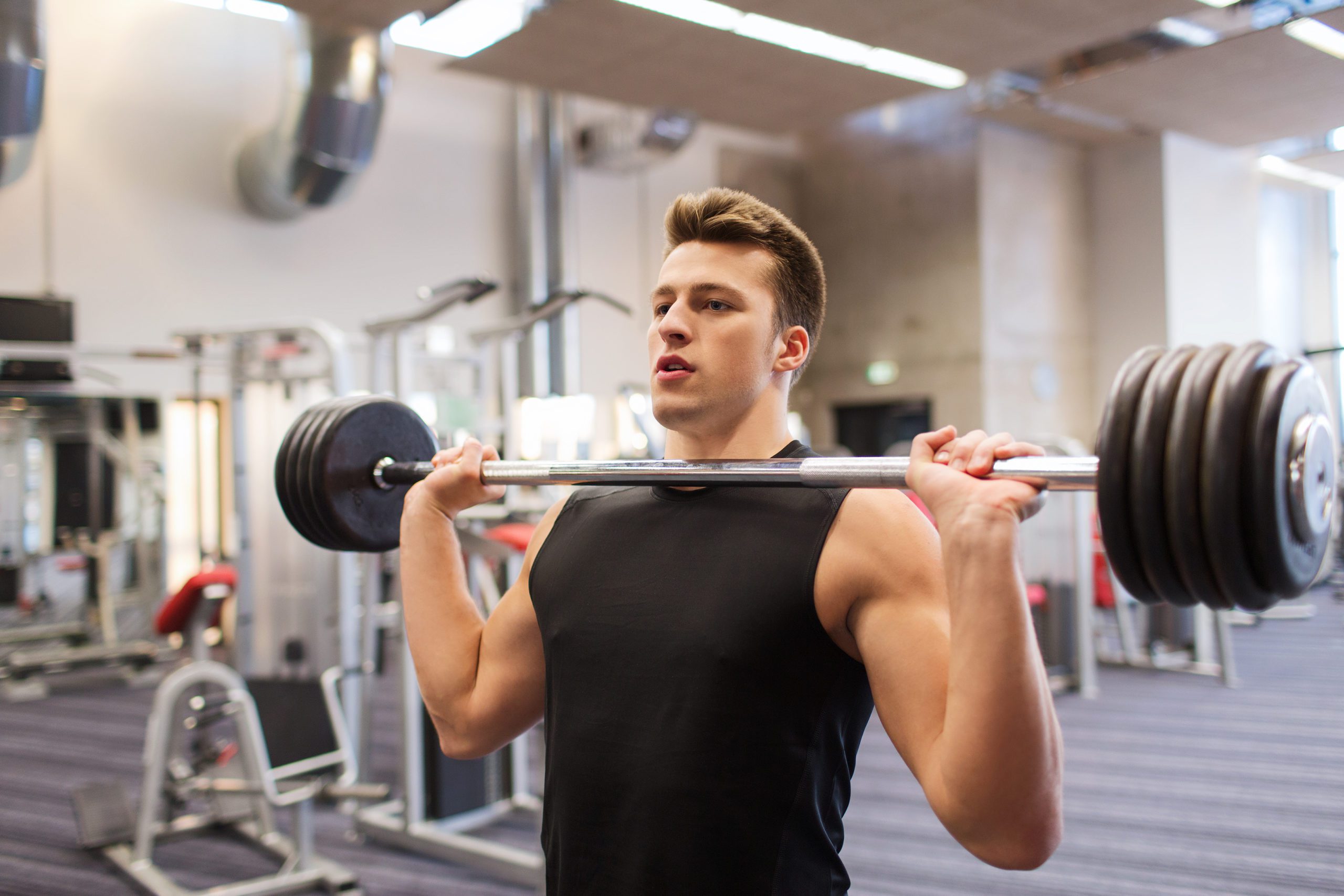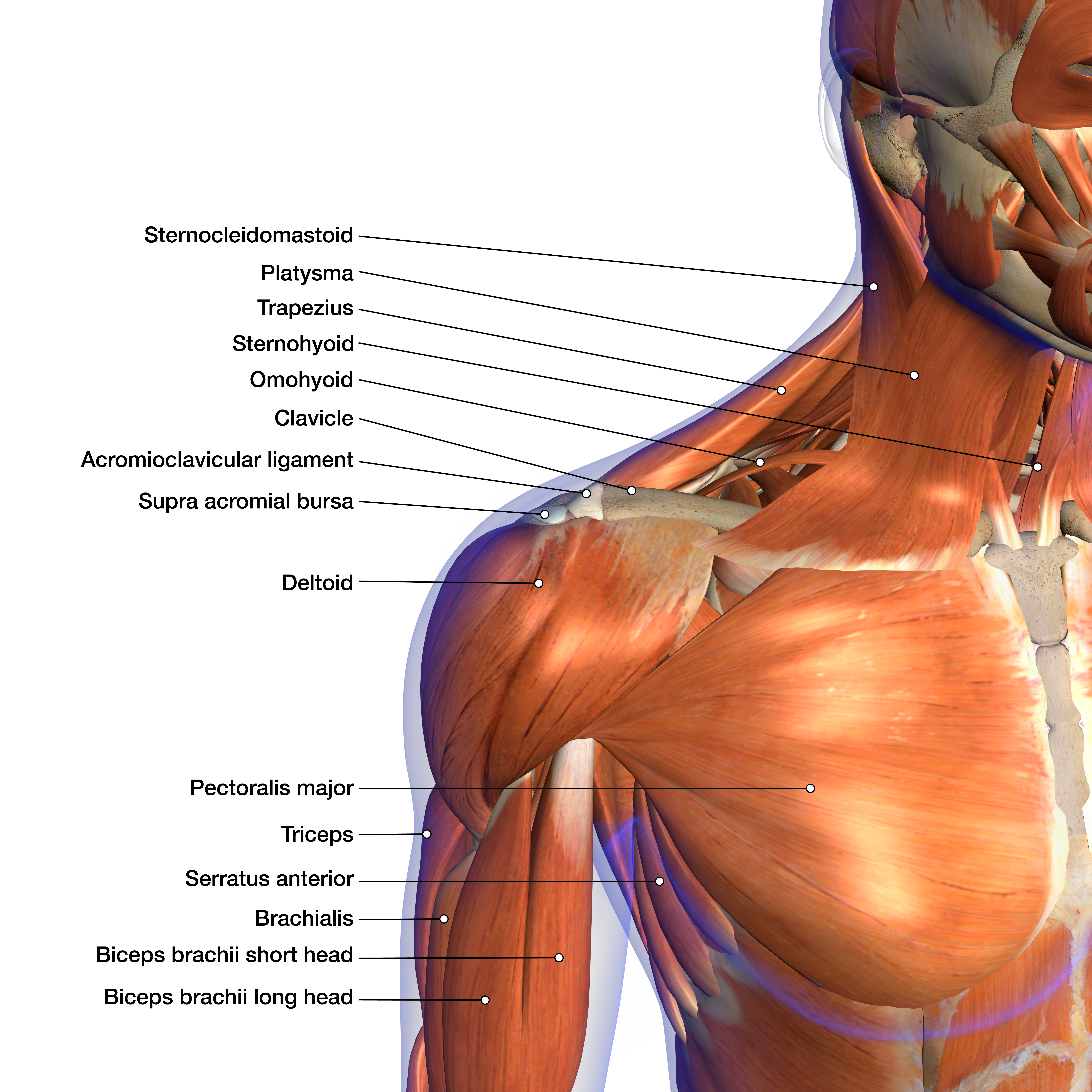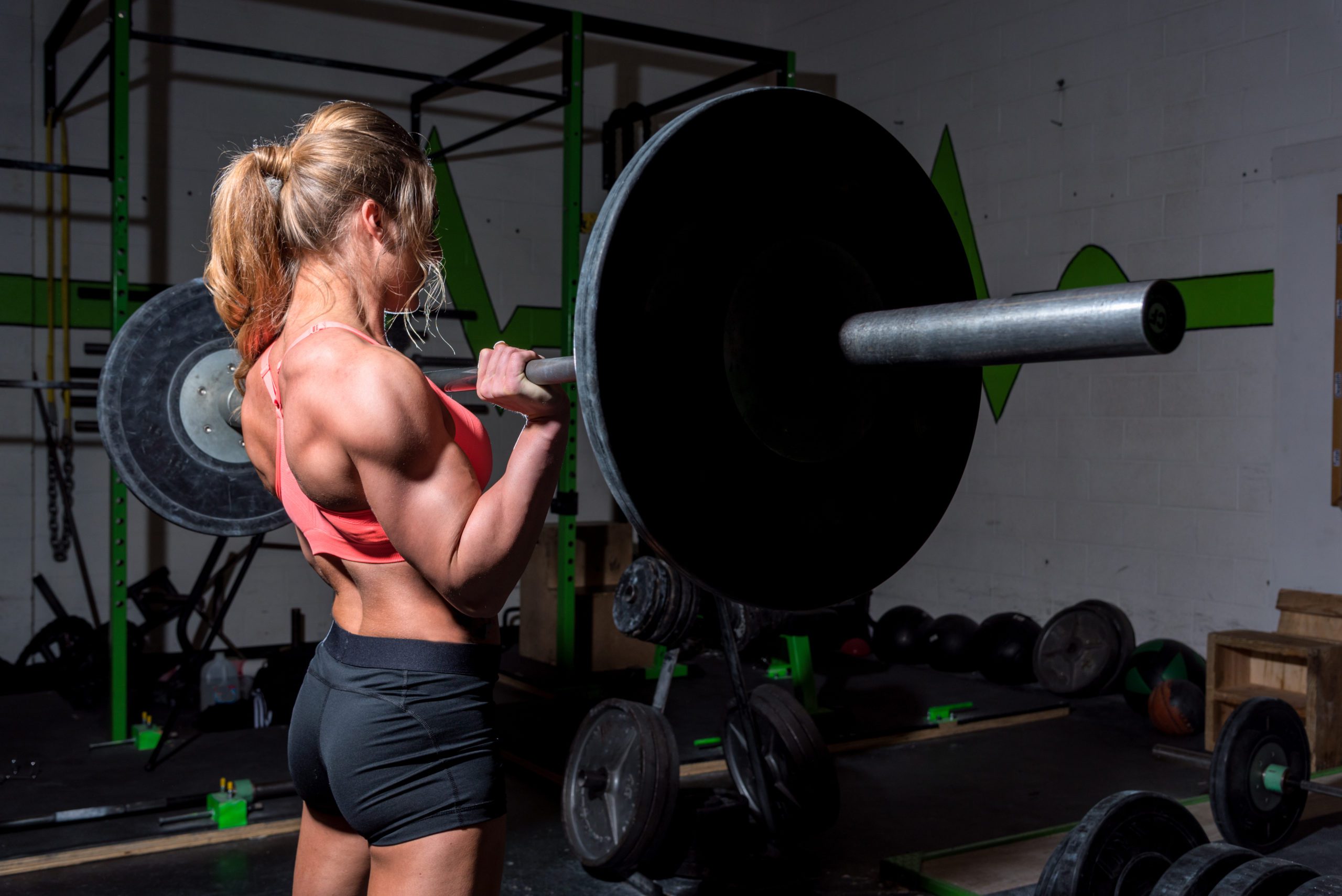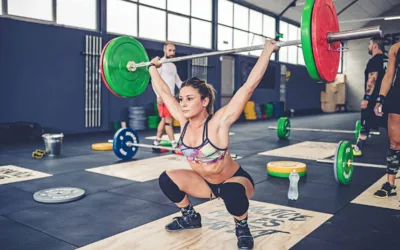4 Reasons Your Shoulder Workouts Need More Overhead Pressing

If you frequent globo gyms, you’ve heard the question, “how much do you bench?” (if not directed at you, then at someone with a bigger chest than you). But is the bench press really worth all the hype, or do we just gravitate to it because that’s where we started as teenagers? What other upper body movements could be more useful? Dave Leek is a personal trainer and coach out of Ontario, Canada. He’s been in the fitness industry for almost 20 years and currently maintains a roster of remote clients while coaching CrossFit. As a dad, functional training and longevity are important to him. That includes having strong shoulders. In this piece, he takes us through some shoulder anatomy before outlining why the shoulder press is such a dominant upper body movement—it helps with functional fitness, strengthening the supporting muscles, improving your physique, and preventing injuries.

Why Are Big Chests Are Overrated?
In 1899, the ‘Russian Lion’ George Hackenschmidt performed the first ever recorded floor press. This moment gave way to the development of what we know today as the bench press, arguably the most popular exercise (or at least most discussed in locker rooms) in the world.
Not long after this, the famous question posed by gym-goers everywhere found its way into workout conversations across the globe—”How much do you bench?”
The problem is this question doesn’t tell you much about the caliber of the lifter. It only offers one small piece of the pie and I’m here to suggest that it’s not even an important piece, probably more like the crust. A better question to determine overall strength would be “How much do you shoulder press?”
Before you write me off for disrespecting your favorite lift, let me explain. I’m not saying the bench press doesn’t have a place in a well-rounded training program. It’s a pretty essential compound lift. But pound-for-pound, the shoulder press should be given more love and prioritized in more routines.
You Work too Hard to Not See Progress
Find Your Perfect Training Plan
Options for Every Goal
Training plans from real coaches covering any goal, fitness level, and number of sessions per week.
The Best Coaches
Get coached by the best. Olympians, ex-NFL stars, Titan Games Winners, Sport Scientists and more.
Starting at $1/ day
With many options including a free 7 day trial, you can try out programming before you commit.
Anatomy Refresher

Your shoulder is a ball-and-socket joint made up of a complex muscle group that allows for a wide variety of movements. Also called the glenohumeral joint, it has more range of motion than any other joint in your body in order to articulate your arms in as many directions as possible.
The primary shoulder mover is your deltoid, a thick, triangular muscle with a wide origin point that surrounds the joint on all sides and inserts into the humerus. The primary functions of the deltoid muscle are arm abduction (raising your arm to the side of your body), flexion (moving your arm forward in an overhead position), and extension (moving your arm backward, behind your body).
Your delts work in tandem with the other muscles, like your biceps, triceps, trapezius, and pectorals, to stabilize and move your arms.
Level Up Your Training
With TrainHeroic’s immersive training app
TrainHeroic does everything you wish your old gym notebook could do.
Take the guesswork out of training with built-in exercise instruction and basic training programs. Compete against yourself and others. Track your performance and readiness. Smash your goals.

Why is the shoulder press such a dominant movement?
The shoulder press (or strict press) is the “weakest” compound lift for most athletes, meaning it’s the lowest number in weight they can move. Compared to your bench numbers, your overhead press capacity feels measly, so it’s a bit less celebrated. But this is misleading, since it’s incredibly difficult and impressive to move heavy weight overhead.
Shoulder pressing actually used to be included in powerlifting competitions as part of your meet total, but it became too difficult to judge and was removed around the 1970s. Strongman competitions still include variations of overhead pressing using logs, but the movements aren’t “strict”—a lifter can use their legs to drive the weight overhead.
The strict shoulder press (also called the military press) could be considered the king of upper body movements for several reasons.
1. It has greater functional carryover into daily life
Functional carryover is an exercise’s ability to improve day-to-day living by providing more strength for casual tasks outside of the gym. These are things gym rats sometimes take for granted their ability to do easily: picking up their kids, carrying groceries, walking up stairs, etc.
Good shoulder health is necessary for placing/removing items from high shelves, lifting your child up in the air, throwing a ball, hanging something on the wall, and so many other tasks. Without proper shoulder function, all of these movements can be painful or completely unavailable to someone.
The shoulder press builds strength and maintains (or improves) overall range of motion, making regular daily living tasks doable, easy, and pain-free. For the general population, shoulder function might be one of the greatest assets we own as human beings. Without it, our daily activities are severely limited, which means a reduced quality of living.
2. It’ll improve the surrounding musculature
While the shoulder covers a lot of real estate on the upper body, it’s far from the largest muscle group. Your shoulders are dwarfed by your chest and back muscles, yet they contribute to the function of those surrounding muscles. Your shoulders play a huge role assisting your back and chest during different movements.
Basically all upper body exercises require using your arms. Most, if not all movements that require using your arms also necessitate using your shoulders. Without strong, mobile shoulders, a lot of upper body exercises suffer. If you’ve ever had shoulder surgery, you know how true this is.
A lot of athletes can actually increase their bench press by improving their overhead press, but not necessarily the other way around.

3. You’ll have a better overall aesthetic
Some of you might be saying, “What’s better than a big chest? Haven’t you seen Pumping Iron?” Sure, a large chest definitely turns some heads on the beach or in the weight room. But a big chest paired with underdeveloped lats, shoulders, or arms looks pretty ridiculous. Every 15-year-old kid starts their workout journey with push ups and bicep curls, so it’s no wonder we often see these big chests accompanied by rounded shoulders, excessively tight lats, and twig legs.
“How much do you bench?” has led to some amateur physiques. But you’re not that guy.
A well-developed set of shoulders are a) less common and b) make any physique look huge by adding width to the frame of the torso and creating the visual of a more tapered waist. Big shoulders are also better at filling out t-shirts, sweaters, and dress clothes so you can show off your hard work year round.
A big chest is nice, but if I had to pick one or the other, I’d take large shoulders with an average chest over a large chest with average shoulders.
4. You can prevent shoulder injuries with a stronger press
We can’t overlook the preventative health benefits of strong shoulders developed by overhead pressing. Your shoulder joint is supported by your rotator cuff muscles, and while these muscles can (and should) be trained independently, the basic shoulder pressing movement works on them all at the same time.
The list of possible shoulder injuries is extensive, including things like frozen shoulder, shoulder impingement, shoulder dislocation, shoulder bursitis, and rotator cuff tears. There’s a high-cost, high-reward element to being the most complicated joint in the body. The surrounding musculature requires more care and attention to keep things working pain free.
There are about a million different exercises to train the shoulder and keep it functioning properly, but they all largely center around a strong and healthy overhead press.
The bench press is a phenomenal exercise for developing upper body strength and size, but I believe its glory days are done. The title of most popular upper body exercise should be retired from the bench press and passed on to the shoulder press.
It’s hands down the best upper body pressing exercise and I motion to make “How much do you press?” the new question to determine one’s athletic acumen.
Want Training Tips, Exercise Guides & Knowledge Bombs Sent to Your Inbox?
Sign up for the FitNerd newsletter from TrainHeroic
Related articles
3 Ways to Improve Mobility Without Stretching
Are you still trying the endless foam rolling and stretching exercises to get that deep squat position? We know how important mobility is for great, or even GOOD performance. All professional athletes have some comfortability in end ranges of motion. So, what else do...
The Ultimate Guide to Lunges: Queen of all Glute Exercises
Your glutes are the largest muscle group in your body. They’re responsible for almost everything your legs do—walking, running, jumping, squatting, lunging, and just standing upright. As far as moving through space goes, strong glutes are the bedrock of overall...
A Beginner’s Guide to Steel Mace Training
Author: Jesse Grund
Mace training will make you a better mover without it’s not confining you to a fixed space or predetermined range of motion. Second, it’s an offset load with 80 to 90 percent of the weight in the head. You’re also constantly having to resist rotation, which creates greater core engagement.

Join the community
Sign up for the latest training news and updates from TrainHeroic

About TrainHeroic
Support
Made with love, sweat, protein isolate and hard work in Denver, CO
© 2022 TrainHeroic, Inc. All rights reserved.






